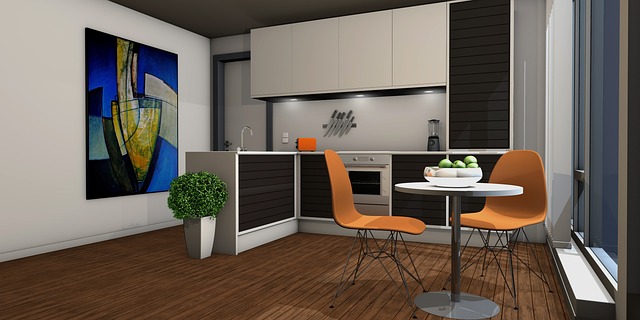Architectural CAD renderings bring design concepts to life through photorealistic 3D models created with specialized software. This process involves meticulous modeling, lighting, and texture application to mimic reality, along with strategic camera angles for effective visualization. It revolutionizes building presentations, enabling architects to convey their vision to clients and stakeholders, enhancing decision-making before construction. In today's digital era, CAD renderings offer immersive 3D visualizations that foster understanding and engagement, supporting informed decisions in the design process.
In the realm of design presentations, architectural CAD rendering is a game-changer. This article delves into the art and science behind creating stunning exterior and interior architectural renderings that bring visions to life. From understanding the basics of architectural CAD rendering to mastering realistic exterior depictions and immersive interior design, we explore effective strategies. Discover how 3D visualizations enhance presentations, making your designs pop and leaving a lasting impression on clients.
Understanding Architectural CAD Rendering Basics
Architectural CAD rendering is a powerful tool that brings design concepts to life, offering a clear and visually appealing representation of a building’s exterior and interior. At its core, it involves using Computer-Aided Design (CAD) software to create precise digital models, which are then transformed into photorealistic images or animations. This process begins with translating the architect’s initial designs into a format that can be manipulated and rendered to produce stunning visuals.
The basics of architectural CAD rendering include mastering the software’s tools to create accurate 3D models, incorporating textures, lighting, and materials to enhance realism, and understanding camera angles and composition for effective visualization. By combining technical accuracy with artistic skills, architects can create renderings that not only showcase their designs but also communicate their vision convincingly to clients and stakeholders.
Creating Realistic Exterior Renderings Step-by-Step
Creating realistic exterior renderings for architectural CAD renderings involves a meticulous process that brings design concepts to life. It starts with understanding the building’s context, including its surroundings and nearby landmarks, which sets the scene for the rendering. Architects then use 3D modeling software to create detailed models of the structure, paying close attention to dimensions, materials, and textures.
Next, lighting is carefully considered to mimic natural sunlight or artificial illumination, adding depth and dimension. Advanced rendering engines can simulate various weather conditions, from clear skies to rain or snow, enhancing the realism. Finally, subtle details like shadows, reflections, and even people or vehicles in the background contribute to making the exterior rendering look truly lifelike, effectively communicating the design vision to stakeholders.
Interior Design: Bringing Spaces to Life Virtually
Interior design is a meticulous art that transforms raw spaces into inviting, functional areas. Architectural CAD renderings play a pivotal role in this process by offering a virtual window into the designed space before construction begins. Through photorealistic 3D visualizations, designers can bring their visions to life, showcasing every detail from sleek furniture arrangements to intricate lighting designs.
These renderings provide a powerful tool for clients and architects alike to visualize and experience the final product. With architectural CAD rendering, interior design concepts become more than mere drawings on paper; they become immersive digital environments that allow everyone involved to make informed decisions, ensuring the end result aligns with the initial creative vision.
The Power of 3D Visualizations in Presentations
In today’s digital age, architectural presentations have evolved beyond two-dimensional drawings. The power of 3D visualizations in architectural CAD renderings has transformed how design concepts are communicated. This immersive approach allows clients and stakeholders to experience a project’s potential before construction begins, fostering better understanding and engagement.
By integrating photorealistic images and interactive models, architectural renderings create a vivid representation of the final product. This not only enhances presentation quality but also facilitates informed decision-making. With 3D visual tools, architects can showcase intricate details, play with different materials, and explore various design alternatives, ensuring that every aspect of the project is flawlessly executed.
Architectural CAD rendering is a powerful tool that transforms design ideas into captivating visuals. By mastering techniques like realistic exterior renderings and immersive interior design, professionals can elevate their presentations. This article has guided readers through essential steps, from basic concepts to advanced 3D visualizations, empowering them to create compelling architectural representations that leave lasting impressions on clients and stakeholders alike.
